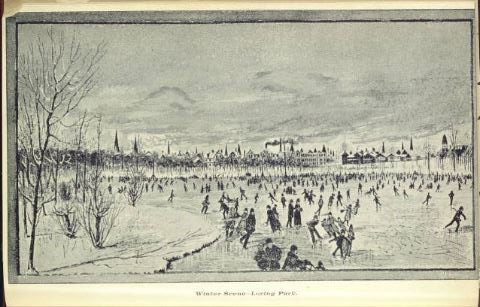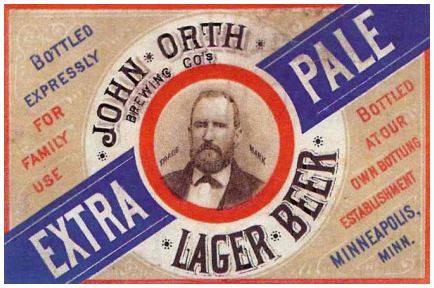As you enter Lakewood, you pass through our front gates. Yes, the gates serve the practical purpose of safekeeping, but they also serve another much more important purpose — they signal that you are passing into a special place, one of serenity, solace and reflection, in the heart of Minneapolis.
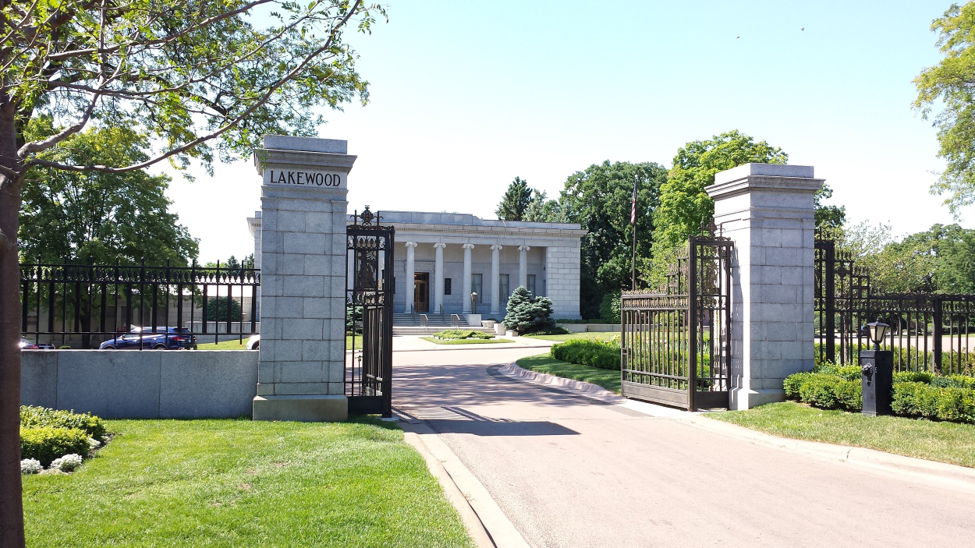
Lakewood’s main entrance at 36th Street & Hennepin Avenue in Minneapolis, with a view of the Administration Building, 2019.
Lakewood’s front gates are open to all visitors, and we welcome the community to spend time here and to explore and discover the natural, historical and architectural treasures found inside these gates.
Read on to learn how Lakewood’s gates (and other entrances) have changed since our founding in 1871, often reflecting an evolving Minneapolis.
The 1880s: Making a Grand Entrance
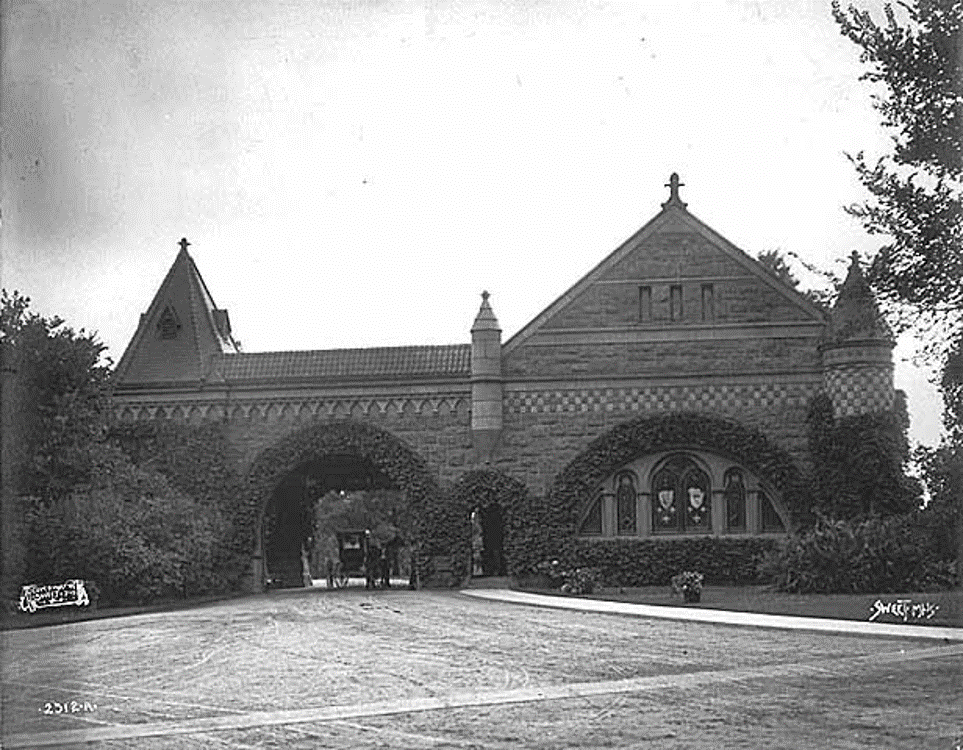
Lakewood’s entry gatehouse, pictured here in 1903.
Source: Minnesota Historical Society
In the early 1870s, Minneapolis extended only as far south as Franklin Avenue. Road construction was in its infancy, and streets were unpaved. People traveled by foot or by horse-and-carriage (if they could afford it). Situated four miles south of downtown, the cemetery was quite isolated. It was so remote that Lakewood even built housing for some of its workers across from the main entrance (on what is 36th Street today). These worker’s houses were some of the only buildings in the area.
When early visitors to Lakewood arrived at the cemetery, they were greeted by a small chapel near the entrance — wooden in the cemetery’s first few years, and replaced with a small, dark sanctuary of stone in the later 1870s. In those early years, most of the cemetery’s architectural beauty was found in the monuments, not the buildings.
As the 1870s gave way to the 1880s, it became clear that Minneapolis would not stop growing any time soon. And though Hennepin Avenue, which extended to the cemetery’s entrance in the 1880s, was still sparse with buildings south of Lake Street, Lakewood’s leaders could see the city’s coming growth. If the cemetery were going to continue its nonprofit mission to provide comfort and solace to generations of Minneapolitans, they’d need to set themselves apart with a grand entrance.
In 1887, construction of a new gatehouse at 36th & Hennepin began only after a heated debate, in which one founding member of Lakewood fought to change the entrance to 36th & Humboldt. But the Board voted to keep the Hennepin Avenue entrance, and approved the design of a large, granite gatehouse that featured a vine-covered, stone-arch entryway and an attached office.
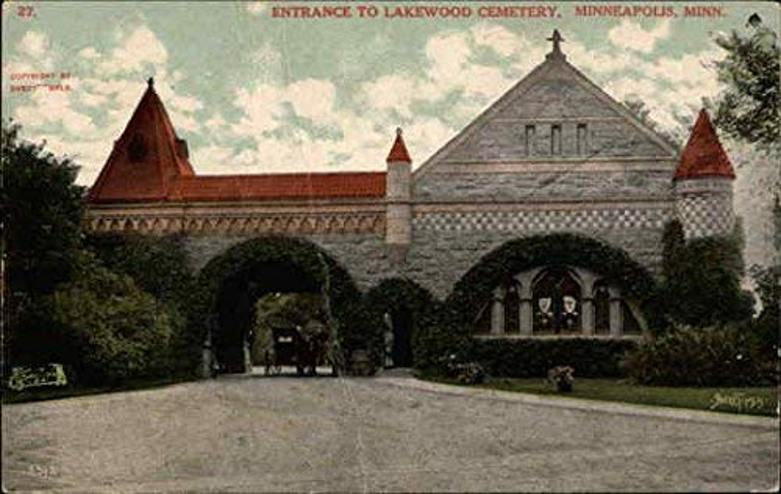
A postcard of Lakewood Cemetery’s original gatehouse.
Architect Frank I. Read designed the building, complete with Romanesque arches made of brick and stunning red granite and inlaid images of lotus and passion flowers, crosses, birds and olive branches. The arches were tall and wide enough to provide shelter for carriages, as the entry pre-dated widespread use of cars or the connection of the lakes area to the city center via streetcar. A smaller stone archway was created for pedestrians.
Attached to the gate was a substantial reception house, adorned with the same grand arches. Despite the size of the attached building, it had only two rooms — a reception room for families and a superintendent’s office.
Lakewood was not the first cemetery to have such a remarkable gatehouse. In the late 1800s, it was not unusual for large rural cemeteries to have grand entrances, and Lakewood’s Board looked for inspiration across the U.S., including Cincinnati’s Spring Grove Cemetery, Cambridge’s Mount Auburn Cemetery, and New York’s Green-Wood Cemetery all had grand entrances, with styles ranging from Egyptian Classical to Gothic Revival.
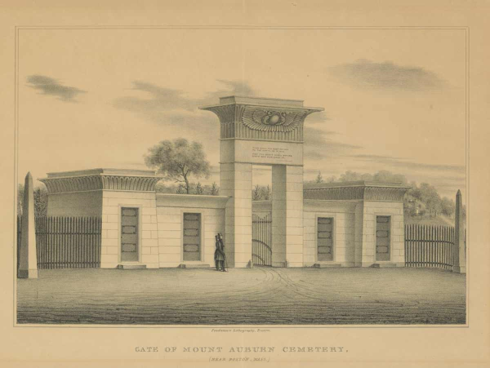
The entrance gate of Massachusetts’ Mount Auburn Cemetery, built in 1832 in an Egyptian Revival Style. Source: Mount Auburn
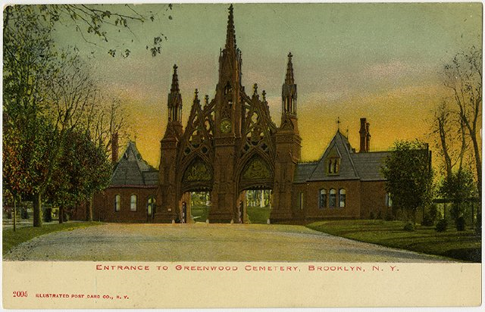
The entrance gate of New York City’s Green-Wood Cemetery, completed 1865 in a Gothic style. Source: Brooklyn Historical Society
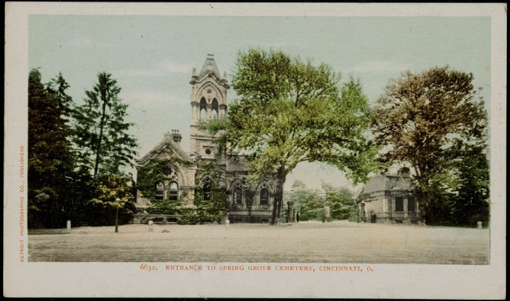
The Gothic entrance to Cincinnati’s Spring Grove Cemetery, built in 1863.
Source: Museum of Fine Arts, Boston
The 1890s: The Streetcar Brings Visitors
In 1895, the streetcar connected Lakewood to downtown Minneapolis, making the cemetery much more accessible to the growing city’s residents. In the early 1900s, streetcars were the primary way to travel in the Twin Cities. For the cost of 5 cents, residents could ride the streetcar from downtown through the then-growing area we now know as Uptown, and gaze out the window as the trolley wrapped around the eastern edge of Bde Maka Ska (formerly Lake Calhoun) and over to Lake Harriet.
The new streetcar line passed right alongside Lakewood’s western boundary. Lakewood opened a new, separate streetcar gate to ensure streetcar riders could access the cemetery just as easily as those coming up Hennepin Avenue by carriage.
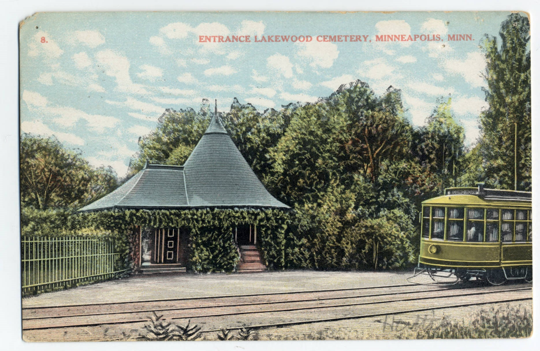
A postcard from Lakewood’s streetcar entrance, roughly 1907. Source: Minnesota Streetcar Museum via the Hennepin County Library
In 1906, Lakewood improved its streetcar entrance by adding a brick gatehouse. Calling it a “public comfort building,” it was staffed with an attendant, who helped cemetery visitors dust off their formal mourning attire before entering the grounds.
Though not nearly the size of the main entrance, images of the streetcar entrance also made it onto postcards of the day. Lakewood became a regular stop on the “Twin City Sight Seer,” a three-and-a-half-hour trolley tour that brought riders past some of the cities’ most scenic spots. On this tour, Lakewood was among popular sites like Loring Park, the State Fair grounds, the University of Minnesota, and St. Anthony Falls.
The 1930s: A New Administration BuildingBy the end of the 1920s, Lakewood decided the 1880s front entry was due for a revamp. The 36th Street gatehouse was beautiful, but no longer practical. With only two rooms in the adjoining building, it was difficult for the growing number of staff and families to find privacy and comfort during the grieving process.
In 1929, Lakewood solicited commissions from a handful of architects for a new entrance and administration building. The Board settled on a design from local architect Ernest Kennedy, who had made a name for himself designing some grandiose Minneapolis mansions, as well as the substantial, ornate Shevlin Hall at the University of Minnesota.
Kennedy’s design for the new administration was striking but practical. Done in a Greek Revival style, its front boasts eight symmetrical columns. He used some of the finest materials available, with an exterior of granite, an interior of marble, terrazzo tile floors, bronze or solid wood doors, and meticulous wooden inlays and trim. The building’s design set aside plenty of comfortable space for visitors and staff alike, including a large main entrance, private rooms, conference areas and offices.
The original gatehouse remained open throughout construction, but was demolished after the new Administration Building opened in 1930. At this time, prominent stone pillars and a wrought iron gate were put in place along 36th Street. The purchase of the gate, with its 345 sections, each 16-feet long by 6-feet high, helped support a local iron company that was struggling to stay afloat during the Great Depression.
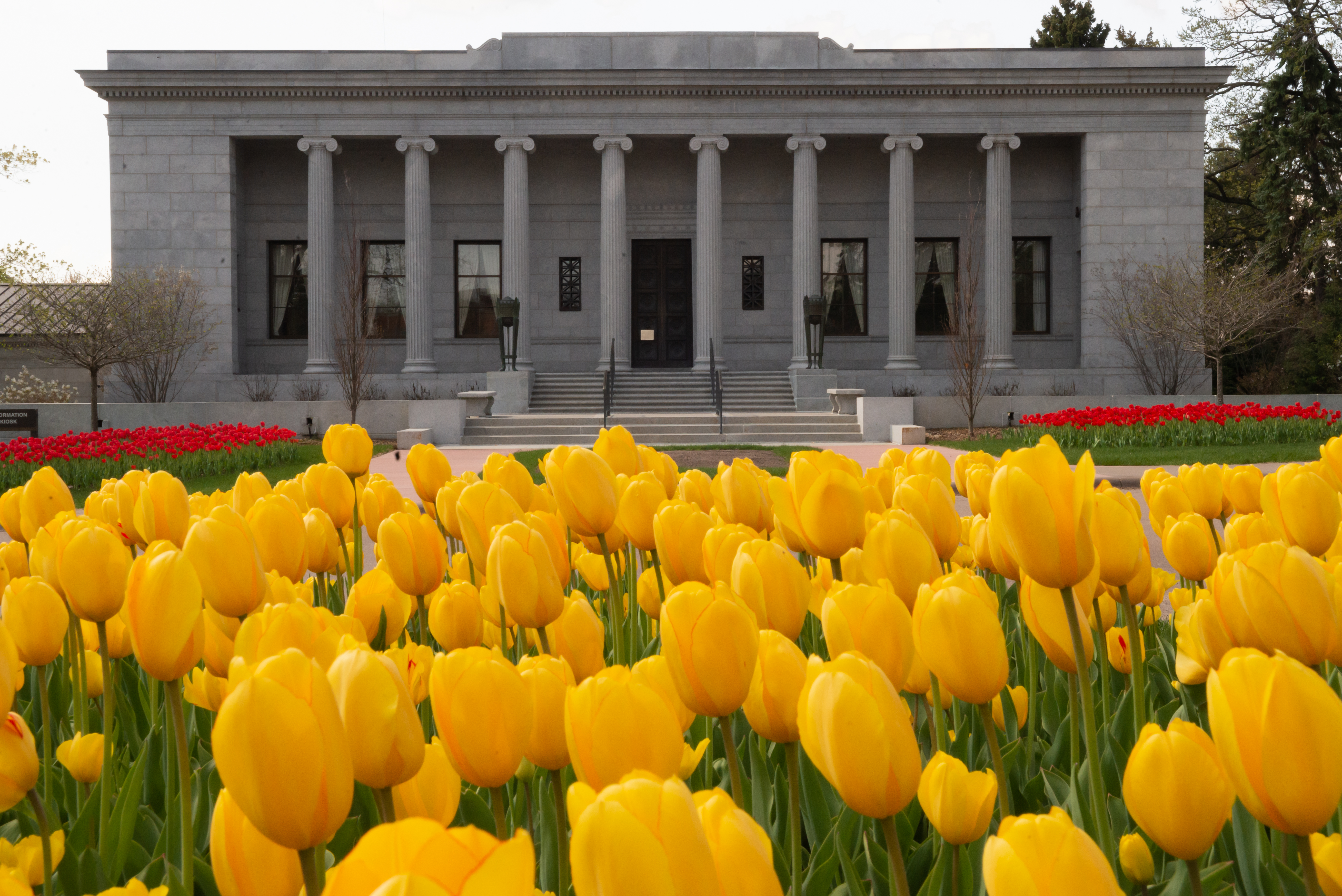
Lakewood’s Entrances Today
As the city has changed, so too has Lakewood. The streetcars stopped running in 1954, and Lakewood’s streetcar gatehouse was torn down. (Learn more about The Como-Harriet Streetcar line which runs the historic streetcars today — in fact, they run a streetcar to and from Lakewood’s old streetcar entrance every year on Memorial Day.)
Our front entrance, however, has remained largely the same since the 1930s. The flower beds have become a lasting tradition — full of horticultural masterpieces created in Lakewood’s own greenhouses.
In 1993, the Administration Building underwent a major remodel that added more private meeting space for families and staff. And recently, the cemetery’s wrought iron gates were refurbished.
For nearly a century and a half, Lakewood has been a transformative place of beauty and solace — from the moment you arrive at our front gates.
Note: The Administration Building is open Monday – Friday: 8 a.m. – 4:30 p.m., and Saturday from 8 a.m. – noon. If you stop in, we’re happy to help you locate a family member or loved one’s grave, or talk to you about all that Lakewood has to offer.

